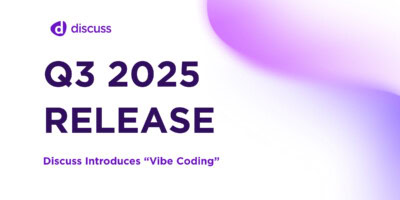Rigor in Qualitative Research Methods

Qualitative data’s importance is directly linked to its quality. From the initial phases of design to post-release follow-through, such input helps designers and marketers better understand their customers’ or prospective customers’ opinions, ideas, and concerns. To be truly valuable, this type of data requires rigor in qualitative research, ensuring that findings are accurate, reliable, and reflective of real user experiences. Integral for direction, qualitative data must be as accurate and thorough as possible, providing the foundation for more confident decision-making.
A study’s rigor is what primarily differentiates what is research and what is not research. The strength of a study’s processes and findings, ‘rigor’ is a catch-all term that denotes quality and reliability within all methods of research. Measuring rigor depends on research methodology and type. Rigorous quantitative research, for instance, considers specificity, accuracy, and thoroughness. Likewise, rigor in qualitative research has its own set of criteria, focusing on credibility, depth, and the careful interpretation of human experiences. By applying these principles, researchers ensure that qualitative findings are not only insightful but also trustworthy and actionable.
- Credibility – The stringency of a study’s processes, accuracy of its sources, and level that findings that properly reflects its topic area
- Applicability – The data’s and study processes’ applicability to different contexts and scenarios
- Consistency – The study’s findings degree of similarity if the research and its processes are repeated
- Neutrality – Lack of biases, motives, or other elements that can skew findings
Common Methods to Ensure Adequate Rigor in Qualitative Research
There are a few core methods that help ensure rigor in qualitative research, each accounting for different factors that guide business research approaches such as interviews, focus groups, or observational studies. While important individually, using multiple methods together further enhances a study’s overall accessibility and depth by providing more well-rounded insights. This combined approach also helps balance out the limitations of any one method, since no single area of research is fully comprehensive on its own. By layering these methods, researchers not only strengthen the rigor in qualitative research but also improve the validity and applicability of their findings in real-world business contexts.
Accounting for Bias
Qualitative researchers strive for the most accurate findings possible. Objectivity is very important. No researcher, however, can remain completely detached from their own perspective. Analyzing bias and expectations, both individually and as a group, ensures researchers better consider implications, processes, and all important lines of inquiry.
Clear Paper Trail
A clear paper trail that documents all important activity, processes, and details is crucial for both the study’s direction and analysis. Through it, researchers can identify their progress and objectives, as well better consider alternative routes to their goals. Clear paper trails allow researchers to more easily review archives, as well track progress and changes.
Respondent Validation
Selecting the right respondents is crucial to qualitative research. Ensuring respondents are truthful about their background is a major part of each study’s legitimacy. Including the wrong respondents can throw off insight relevant to anything from product generation to post-release follow ups.
Software and Technology
Computer-assisted qualitative data software, or CAQDAS, enables researchers to streamline numerous market research methods while also preserving the data’s integrity. Typically used for coding, or the process of cataloging and comparing input, CAQDAS also quickens the analysis process. Researchers can cover more areas and consider more angles with such programs.
Innovations like efficient HD streaming and mobile technology, meanwhile, are opening new avenues for researchers. Many qualitative methods traditionally require a shared space for research -emotives are often important as spoken replies. New services, however, are enabling researchers to conduct on-demand, online qual that offers the same observational detail as the human eye. Online qualitative platforms also improve the other aspects of rigor. Overall access to respondents dramatically improves, as does validating them and tracing each study’s progress.
Click here to learn more about online qualitative interviewing.
Ready to unlock human-centric market insights?
Related Articles

How to Facilitate Meaningful Insights: Strategies for Effective Focus Group Discussions
Conducting a worthwhile focus group requires a strong purpose and well-defined objectives. This isn’t an ordinary chat; it’s an organized…
Conducting a worthwhile focus group requires a strong purpose and well-defined objectives. This isn’t an ordinary chat; it’s an organized…

How to Optimize Engagement with a Virtual Focus Group: Strategies and Tips
Creating successful engagement in virtual focus groups starts with proper planning. This involves everything from the setup of your digital…
Creating successful engagement in virtual focus groups starts with proper planning. This involves everything from the setup of your digital…

Maximize the number of research projects completed by year’s end: Yes, it can be done
Ask most agencies managing enterprise-level market research (MRX) projects, and they’ll tell you they have a love/hate relationship with their…
Ask most agencies managing enterprise-level market research (MRX) projects, and they’ll tell you they have a love/hate relationship with their…



